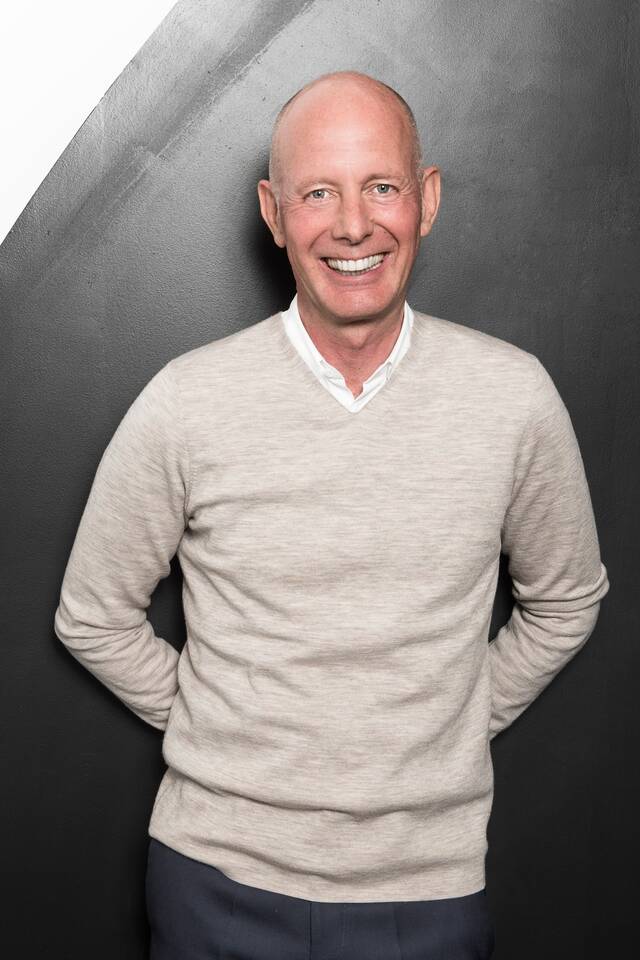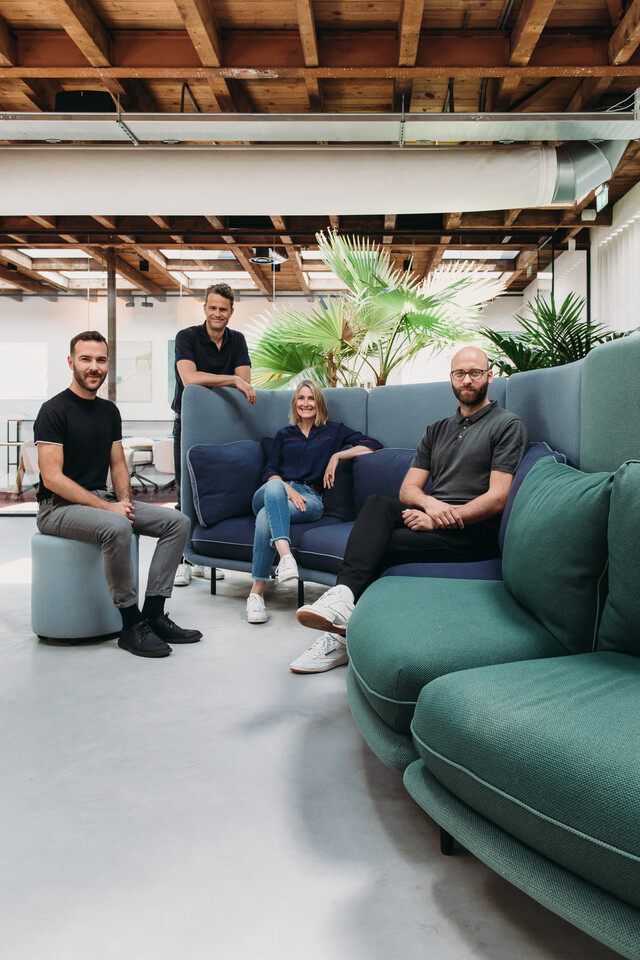
Designers
We like to work with the best designers, who can find themselves in our design philosophy. Read more about our designers here.

Friso Kramer
Friso Kramer was a quirky modernist. He believed in 'form follows function' and 'less is more'. Not as dogma but as outcome of human involvement. That was the essence of everything. The simplicity of his designs , meant that they were not eye-catching; yet everyone recognises at least one of his designs. This makes Friso Kramer the most famous, unknown designer. One of The Netherlands' largest industrial designers, he was a rare foreigner who was crowned with the English title; Royal Designer for Industry.
Read onMarck Haans
Marck Haans (1962), Head of Design at Ahrend and designer of the Qabin Collection, has worked at Ahrend since 2010. His designs are characterised by a timeless, minimalist style. In his own words: ‘Products that don’t impose on the space they are used in’. As a student he combined he innate technical skills with great creativity. He continues to do so to this today. He studied Monumental Design at the Royal Academy for Art and Design in Den Bosch from 1982 to 1988, before studying at the Design Academy in Eindhoven.

During this period he started work as a designer at Brabantia, where he designed a range of products for the consumer market. He switched to project furniture in 1994. After running his own furniture company and working at Gispen, he joined Ahrend.

Kees de Boer
Kees de Boer was born in 1969. After a course in automobile engineering at a technical secondary school from 1986 to 1990, he went on to study at the Academy for Industrial Design (now The Design Academy) in Eindhoven until 1996 where he chose the specialism Man & Work.
During his time in Eindhoven, he gained work experience in the design department of Studio Villa, Paolo Villa Industrial Design, in Milan in 1995. He worked on his graduation project at Dona Consult in Tilburg. After completing his studies, he worked as an industrial designer for Duvedec International bv in Veldhoven in 1997. He has been employed as a designer by Ahrend Produktiebedrijf Zwanenburg bv since 1997.
Ben van Berkel
Ben van Berkel (born 1957) began his career at the Rietveld Academy. His love of Japanese architecture brought him to Kyoto. He then graduated cum laude at the Architectural Association in London in 1987.
Together with Caroline Bos, he founded Architectuurbureau Van Berkel & Bos in 1988 and UNStudio in 1998: a global network of specialists in architecture, urban planning and infrastructure. At 32, he designed the Erasmus bridge. This was later followed by, among other projects, the Mercedes-Benz Museum in Stuttgart (1822-Kunstpreis 2003), the Agora Theatre in Lelystad and the Central Station in Arnhem (German Design Award 2018).
Besides his architectural practice, Ben is a lecturer at universities at home and abroad: In 2011, he was appointed to the Kenzo Tange Chair at the Harvard Graduate School of Design. In 2016, UNStudio won the BNA Kubus Award for its outstanding contribution to architecture. In 2024 he designed for Royal Ahrend the most sustainable task chair yet: The Ahrend Remode.
Read more

Paul Brooks
Paul Brooks studied product and furniture design at Ravensbourne College of Design. He then obtained his MA in Industrial Design from the Royal College of Art in London. After graduating in 1983, he worked in London at the design studio of Robert Heritage CBE (Professor - School of Furniture RCA), and was involved in various furniture and lighting projects. Later he designed lighting systems at steven hall's studio, which were implemented by Philips and Lita (France), and products for Habitat (UK).
In 1990 Paul started working as an independent designer in London with his core business, designing chairs. Paul established himself as a reliable designer and worked for the most prestigious office furniture companies in the UK. In 2008 he received the "Designer of the Year" award at the presentation of the Office Furniture Industry design awards in the UK. Paul also worked as an assistant lecturer for ten years in the Industrial Design programme at ravensbourne College of Design. Paul believes that the best results are achieved if a designer can work well "in a team" with a customer. To achieve this, he has worked regularly with Senator and Boss Design in the UK over the past 10 years and has been working with Bock in Germany for six years. In 2006 Paul moved to Strasbourg in France and opened his "Paul Brooks Design GmbH" studio in Kehl, Germany. Recent products have received awards such as the Red Dot prize Germany (Viasit) and a Gold prize during NeoCon Canada (Boss). Paul's design methodology is evolutionary and liberal - function suggests possibility. Paul believes that the best products show enthusiasm and sincerity.
HofmanDujardin
HofmanDujardin’s Office villa feels beautifully balanced. Both calm and exciting. Elegant and simple. lnspiration comes from all over the world. Fourteen nationalities are represented and nine different languages are spoken, but sketches do most of the talking. Welcome to HofmanDujardin.
They are architects that put people first. Since1999, they create dynamic spaces that work well and feel good. Their projects result from an unique and personal approach they call Shaping lntuition® with a focus on the well-being of humans in the surroundings. They give people the individual opportunity to harmonize the qualities of spaciousness, groundedness, expression and connection. They combine these with their cultural values which shapes their projects: clarity, quality, personality and inspiration.
The design team of Embrace Collection consists of Barbara Dujardin, Michiel Hofman, Bo Winnubst and David Hernández López


Basten Leijh
Basten Leijh is known for creating a timeless, characterful environment in which his designs seamlessly merge fun and functional ease. With his many years of experience as a product and concept developer, business partner and
creative director within leading companies, and a number of brands he can call his own, Basten Leijh is considered an expert in the field of product design.
The design with which he graduated from the Design Academy in Eindhoven (The Netherlands) at the beginning of his career was immediately purchased
by an international bicycle manufacturer.
Basten Leijh has been focusing on modular designs since 2010, thereby building unity in form. This unity in form runs like a thread through his designs for Ahrend and creates a connection between these different collections.
His talent for merging two separate worlds has led to the creation of a new design language. He has developed a bird’s eye view that allows him to successfully combine brands from different industries, which is reflected in
the lighting he has specially designed for Ahrend in collaboration with Modular Lighting Instruments.
Basten Leijh has received various awards for his work, and his designs have been displayed at a number of international exhibitions.

